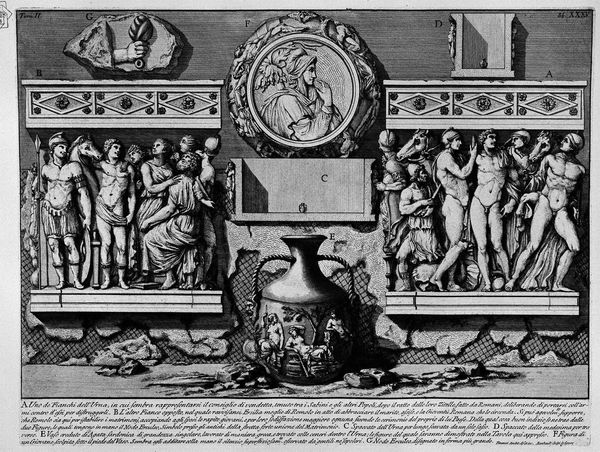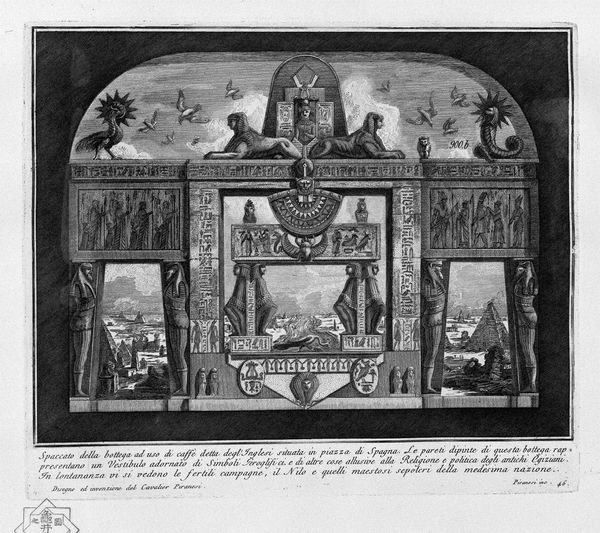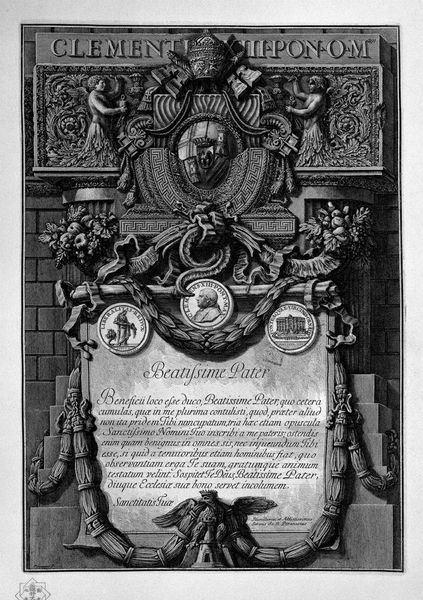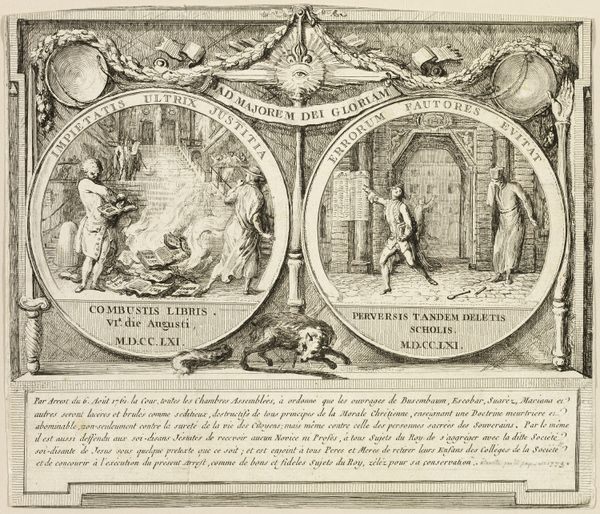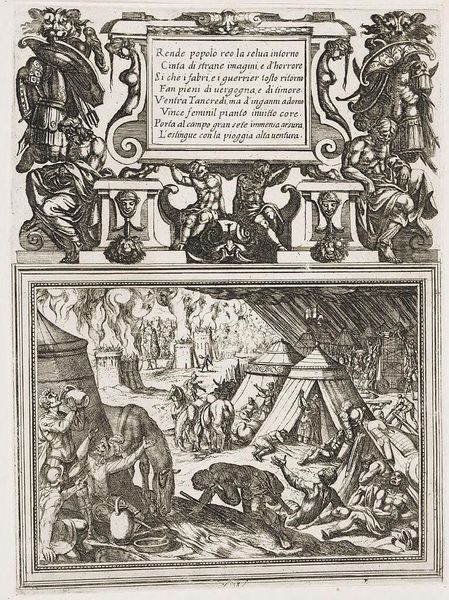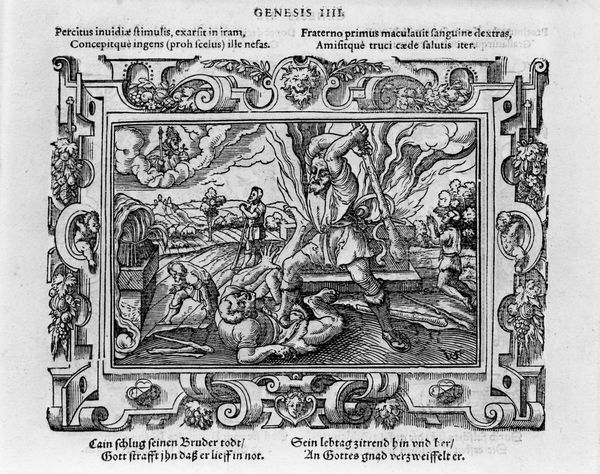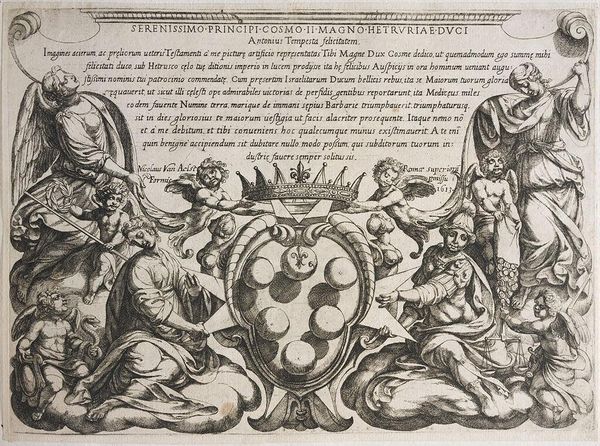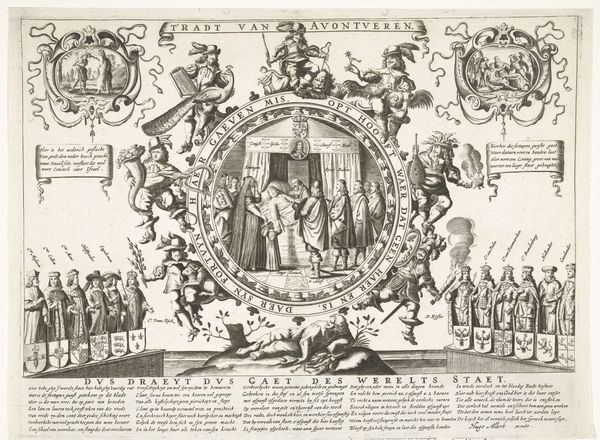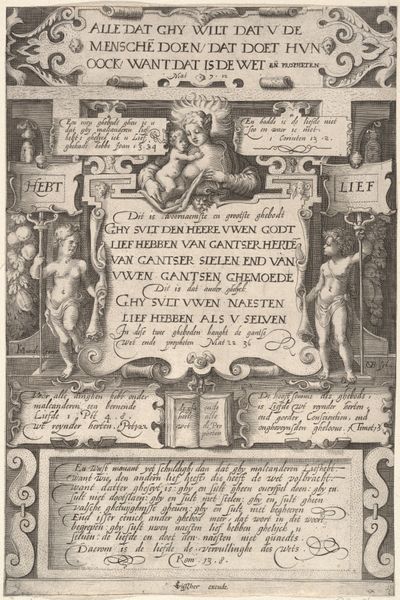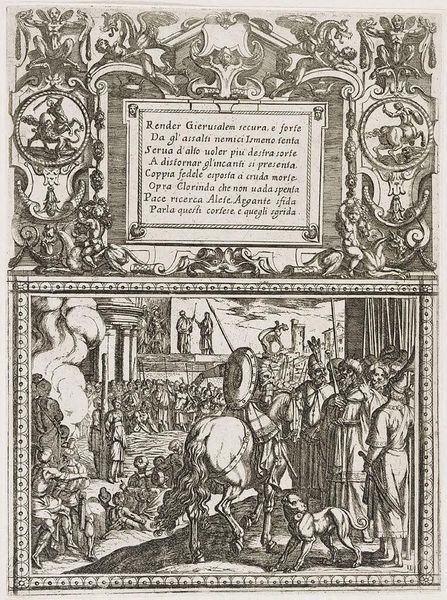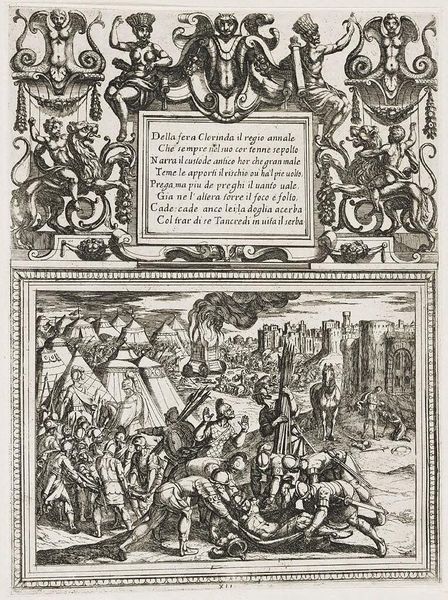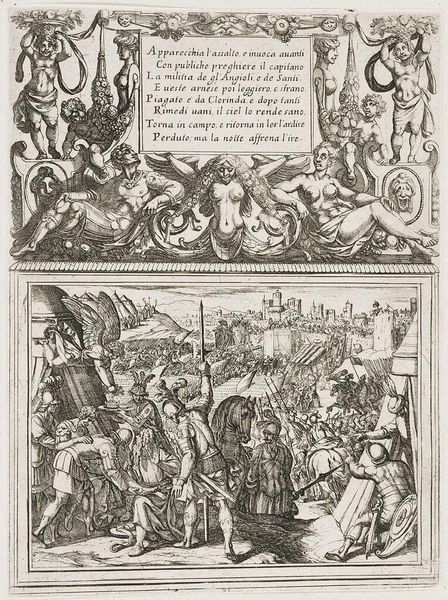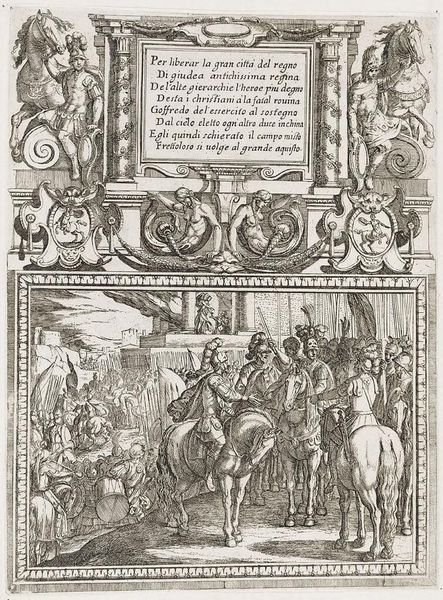
The Roman antiquities, t. 2, Plate XIII. Ornaments in stucco, existing in the Time of the burial chamber of L. Arrunzio. 1756
0:00
0:00
drawing, print, engraving
#
drawing
#
allegory
# print
#
romanesque
#
roman-mythology
#
ancient-mediterranean
#
arch
#
history-painting
#
engraving
Copyright: Public domain
This etching by Giovanni Battista Piranesi, from around 1778, meticulously documents stucco ornaments found in the burial chamber of L. Arrunzio, freezing fleeting moments of history. Dominating the scene is a relief likely depicting a ‘Ratto’, or abduction. Such scenes, often mythological, like the abduction of Orithyia by Boreas, were potent symbols of fate and passion. The figures, caught in dynamic struggle, reflect humanity's timeless fascination with themes of love, violence, and destiny. The depiction echoes similar motifs found in ancient sarcophagi and frescoes, where abduction scenes symbolized transitions, both literal and metaphorical. Consider the emotional power embedded in these images: the terror of the abducted, the force of the abductor. Such emotional displays tap into deep-seated psychological experiences, resonating with viewers across generations. The motifs are not merely aesthetic; they serve as conduits for cultural memory, continuously re-emerging in art, literature, and our collective consciousness.
Comments
No comments
Be the first to comment and join the conversation on the ultimate creative platform.
